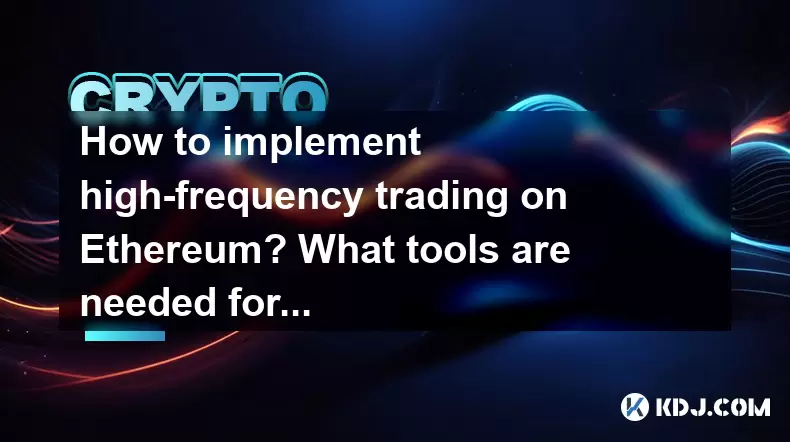-
 Bitcoin
Bitcoin $119600
0.45% -
 Ethereum
Ethereum $4671
8.16% -
 XRP
XRP $3.250
2.78% -
 Tether USDt
Tether USDt $0.9999
0.01% -
 BNB
BNB $838.0
3.17% -
 Solana
Solana $198.5
12.77% -
 USDC
USDC $0.9997
-0.01% -
 Dogecoin
Dogecoin $0.2396
6.18% -
 TRON
TRON $0.3547
2.21% -
 Cardano
Cardano $0.8583
9.20% -
 Chainlink
Chainlink $24.42
13.29% -
 Hyperliquid
Hyperliquid $44.08
1.42% -
 Stellar
Stellar $0.4492
2.37% -
 Sui
Sui $3.915
6.09% -
 Bitcoin Cash
Bitcoin Cash $612.9
3.02% -
 Hedera
Hedera $0.2627
5.34% -
 Ethena USDe
Ethena USDe $1.000
-0.03% -
 Avalanche
Avalanche $24.94
7.83% -
 Litecoin
Litecoin $132.6
10.48% -
 Toncoin
Toncoin $3.439
1.39% -
 UNUS SED LEO
UNUS SED LEO $9.212
2.34% -
 Shiba Inu
Shiba Inu $0.00001371
4.89% -
 Uniswap
Uniswap $11.54
1.13% -
 Polkadot
Polkadot $4.211
7.67% -
 Dai
Dai $0.9998
-0.03% -
 Cronos
Cronos $0.1649
-1.62% -
 Ethena
Ethena $0.7975
-1.46% -
 Pepe
Pepe $0.00001235
9.15% -
 Bitget Token
Bitget Token $4.445
0.46% -
 Aave
Aave $323.7
8.18%
How to implement high-frequency trading on Ethereum? What tools are needed for automatic buying and selling systems?
High-frequency trading on Ethereum uses advanced tech and algorithms to profit from small price changes, requiring careful setup and specialized tools.
May 19, 2025 at 02:14 pm

High-frequency trading (HFT) on Ethereum involves using advanced technology and algorithms to rapidly buy and sell cryptocurrencies to generate profits from small price movements. Implementing such a system requires careful planning, the right tools, and a deep understanding of both the Ethereum blockchain and the broader cryptocurrency market. This article will guide you through the process of setting up an HFT system on Ethereum and discuss the necessary tools for automatic buying and selling.
Understanding High-Frequency Trading on Ethereum
High-frequency trading involves executing a large number of orders at very fast speeds. On the Ethereum network, this means leveraging the decentralized nature of the blockchain to perform trades with minimal latency. The goal is to capitalize on minute price discrepancies that may exist for only fractions of a second.
To implement HFT on Ethereum, traders need to understand the network's mechanics, such as gas fees, transaction times, and the impact of network congestion. Ethereum's transition to Ethereum 2.0, which aims to improve scalability and reduce transaction times, is also a critical factor to consider.
Essential Tools for High-Frequency Trading
Implementing an HFT system on Ethereum requires a suite of specialized tools. Here are the key components you'll need:
API Access: To interact with the Ethereum blockchain, you'll need access to APIs that allow you to send and receive data quickly. Platforms like Infura or Alchemy provide robust API services for Ethereum.
Trading Bots: Automated trading bots are essential for executing trades at high speeds. Bots like Hummingbot or Gekko can be programmed to follow specific trading strategies.
Data Feeds: Real-time data feeds are crucial for HFT. Services like CryptoCompare or CoinAPI provide the necessary market data to make informed trading decisions.
Execution Platforms: Platforms like Binance or Coinbase Pro offer the infrastructure needed for high-volume trading. Ensure that the platform you choose supports Ethereum and has low latency.
Algorithmic Trading Software: Developing custom algorithms or using existing ones like those offered by QuantConnect can help optimize your trading strategy.
Setting Up Your High-Frequency Trading Environment
To set up an HFT environment on Ethereum, follow these steps:
Choose a Reliable API Provider: Select a provider like Infura or Alchemy to access Ethereum's blockchain data. Sign up for an account and obtain your API key.
Set Up a Trading Bot: Choose a trading bot like Hummingbot and install it on your server. Configure the bot to connect to your chosen API provider and trading platform.
Integrate Real-Time Data Feeds: Subscribe to a real-time data feed service like CryptoCompare. Configure your trading bot to receive and process this data.
Develop or Select a Trading Algorithm: Use a platform like QuantConnect to develop your trading algorithm or select a pre-built strategy. Integrate this algorithm into your trading bot.
Test Your System: Before going live, thoroughly test your HFT system in a simulated environment to ensure it performs as expected.
Go Live: Once satisfied with your testing results, deploy your HFT system on the live Ethereum network.
Optimizing Your High-Frequency Trading Strategy
Optimizing your HFT strategy on Ethereum involves several key considerations:
Gas Fee Management: Since Ethereum transactions require gas, managing gas fees efficiently is crucial. Use tools like GasNow to monitor and adjust gas prices in real-time.
Latency Reduction: Minimize latency by hosting your trading bot on servers close to the Ethereum nodes and using low-latency connections.
Algorithm Tuning: Continuously refine your trading algorithms based on performance data. Use backtesting tools to assess different strategies and optimize your approach.
Risk Management: Implement strict risk management protocols to protect your capital. Set stop-loss orders and monitor your exposure to the market.
Monitoring and Maintaining Your HFT System
Once your HFT system is operational, ongoing monitoring and maintenance are essential:
Performance Monitoring: Use dashboards and analytics tools to track the performance of your trading bot. Look for anomalies and adjust your strategy as needed.
Security Measures: Implement robust security measures to protect your system from hacks and unauthorized access. Use multi-factor authentication and encrypt sensitive data.
Updates and Upgrades: Regularly update your trading bot and algorithms to incorporate the latest market data and trading strategies. Stay informed about Ethereum network updates and adjust your system accordingly.
Compliance and Regulations: Ensure that your HFT activities comply with relevant regulations. Stay updated on changes in cryptocurrency trading laws and adjust your operations to remain compliant.
Frequently Asked Questions
Q: Can I implement high-frequency trading on Ethereum without coding skills?
A: While coding skills can be beneficial, there are user-friendly platforms like Hummingbot that offer pre-built strategies and easy configuration options. However, understanding the basics of trading and blockchain technology is still essential.
Q: How do I manage the risks associated with high-frequency trading on Ethereum?
A: Risk management in HFT involves setting stop-loss orders, diversifying your trading strategies, and continuously monitoring market conditions. It's also important to have a clear understanding of your risk tolerance and to adjust your trading volume accordingly.
Q: What are the potential challenges of high-frequency trading on Ethereum?
A: Challenges include network congestion, high gas fees, and the need for low-latency connections. Additionally, the rapid pace of trading can lead to significant losses if not managed properly.
Q: Are there any specific regulatory considerations for HFT on Ethereum?
A: Regulatory considerations vary by jurisdiction, but generally, you should be aware of anti-money laundering (AML) and know your customer (KYC) regulations. Additionally, some regions may have specific rules regarding automated trading systems.
Disclaimer:info@kdj.com
The information provided is not trading advice. kdj.com does not assume any responsibility for any investments made based on the information provided in this article. Cryptocurrencies are highly volatile and it is highly recommended that you invest with caution after thorough research!
If you believe that the content used on this website infringes your copyright, please contact us immediately (info@kdj.com) and we will delete it promptly.
- Meme Coins: Chasing the 2025 Surge – Which Will Moonshot?
- 2025-08-13 10:25:23
- Bitcoin's Wild Ride: Rally, Pullback, and What's Next
- 2025-08-13 10:25:23
- Bitcoin, Bitmax, and Institutional Demand: A New Era of Crypto Investment
- 2025-08-13 10:45:12
- Solana, ROAM, and Airdrops: What's the Buzz in 2025?
- 2025-08-13 11:35:13
- Riding the Crypto Wave: NFTs, DeFi, and the Market's $4.2T High
- 2025-08-13 11:35:13
- Cold Wallet: Cashback, Crypto, and Cutting Gas Fees Like a Boss
- 2025-08-13 11:45:17
Related knowledge

How to purchase Aragon (ANT)?
Aug 09,2025 at 11:56pm
Understanding Aragon (ANT) and Its PurposeAragon (ANT) is a decentralized governance token that powers the Aragon Network, a platform built on the Eth...

Where to trade Band Protocol (BAND)?
Aug 10,2025 at 11:36pm
Understanding the Role of Private Keys in Cryptocurrency WalletsIn the world of cryptocurrency, a private key is one of the most critical components o...

What is the most secure way to buy Ocean Protocol (OCEAN)?
Aug 10,2025 at 01:01pm
Understanding Ocean Protocol (OCEAN) and Its EcosystemOcean Protocol (OCEAN) is a decentralized data exchange platform built on blockchain technology,...

How to invest in Kyber Network Crystal v2 (KNC)?
Aug 12,2025 at 05:21pm
Understanding Kyber Network Crystal v2 (KNC)Kyber Network is a decentralized liquidity hub built on the Ethereum blockchain that enables instant token...

Where can I buy UMA (UMA)?
Aug 07,2025 at 06:42pm
Understanding UMA and Its Role in Decentralized FinanceUMA (Universal Market Access) is an Ethereum-based decentralized finance (DeFi) protocol design...

How to sell my Ren (REN) tokens?
Aug 13,2025 at 11:35am
Understanding REN Tokens and Their Role in Decentralized FinanceREN is an ERC-20 token that powers the Ren protocol, a decentralized interoperability ...

How to purchase Aragon (ANT)?
Aug 09,2025 at 11:56pm
Understanding Aragon (ANT) and Its PurposeAragon (ANT) is a decentralized governance token that powers the Aragon Network, a platform built on the Eth...

Where to trade Band Protocol (BAND)?
Aug 10,2025 at 11:36pm
Understanding the Role of Private Keys in Cryptocurrency WalletsIn the world of cryptocurrency, a private key is one of the most critical components o...

What is the most secure way to buy Ocean Protocol (OCEAN)?
Aug 10,2025 at 01:01pm
Understanding Ocean Protocol (OCEAN) and Its EcosystemOcean Protocol (OCEAN) is a decentralized data exchange platform built on blockchain technology,...

How to invest in Kyber Network Crystal v2 (KNC)?
Aug 12,2025 at 05:21pm
Understanding Kyber Network Crystal v2 (KNC)Kyber Network is a decentralized liquidity hub built on the Ethereum blockchain that enables instant token...

Where can I buy UMA (UMA)?
Aug 07,2025 at 06:42pm
Understanding UMA and Its Role in Decentralized FinanceUMA (Universal Market Access) is an Ethereum-based decentralized finance (DeFi) protocol design...

How to sell my Ren (REN) tokens?
Aug 13,2025 at 11:35am
Understanding REN Tokens and Their Role in Decentralized FinanceREN is an ERC-20 token that powers the Ren protocol, a decentralized interoperability ...
See all articles

























































































